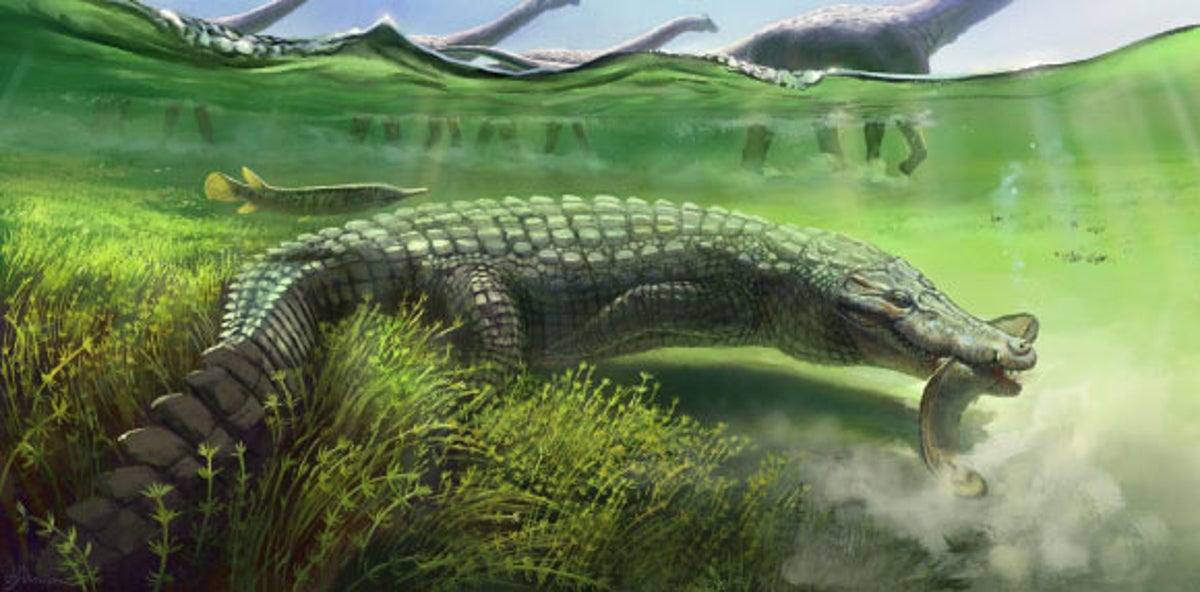Giant crocodile with ‘very strong bite’ that lived alongside dinosaurs found

Scientists have discovered an “enormous” crocodile ancestor species in Brazil that lived alongside giant titanosaur dinosaurs about 72 and 66 million years ago.
The crocodilian species named Titanochampsa iorii was between 3 and 6m (10-20ft) long and had a “very strong bite,” according to the study, published recently in the journal Historical Biology.
Researchers unearthed the fossil – mainly composed of a partially preserved skull roof, including most of the reptile’s right side – in the Monte Alto region in the Brazilian state of São Paulo in 1987.
However, due to the fossil’s large size and fragmentary nature, the specimen was initially labeled as a “partial titanosaur skull” in the museum exhibition, paleontologists said.
But it was later acknowledged as a “fragmentary crocodyliform skull,” they added.
The giant creature likely belonged to Neosuchia – a clade that includes all modern extant crocodilians and their closest fossil relatives.
Scientists suspect the ancient animal likely showed semiaquatic behaviour inhabiting an arid or semiarid environment.
“Both the large size of Titanochampsa iorii and its inferred strong bite are compatible with an amphibian lifestyle, including ambushing behavior, as seen in most crocodiles nowadays and matching its possible affinity to Eusuchia,” scientists wrote in the study.
Despite the incompleteness of the fossil remains, researchers point out that the specimen bears “several unique characters.”
“There are obvious signals of abrasion on the roof surface, but the ornamentation can still be observed, mainly on the squamosal, at the lateral corner of the skull,” they said.
The skull also has small regularly spaced pits and faint grooves, scientists noted.
“Finally, the large size estimated for the specimen, ranging from 2.98 to 5.88 metres, coupled with its possible neosuchian affinity, suggests a possible semiaquatic behaviour,” researchers wrote in the study.
“Titanochampsa iorii contributes to a better understanding of the evolutionary aspects of crocodiles and why Neosuchia was successful, while the vast majority of crocodyliforms became extinct at the end of the Cretaceous period,” paleontologist and study co-author Thiago Fachini from the Universidade de São Paulo in Brazil said in a statement.
For all the latest Science News Click Here
For the latest news and updates, follow us on Google News.

